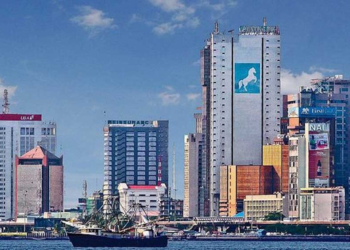Nigeria’s banking sector, Guaranty Trust Bank Holding Plc (GTCO), FBN Holdings Plc, FCMB Group Plc, and Fidelity Bank Plc have collectively reported N478.93 billion in non-performing loans (NPLs) by value in the first half of 2023. This represents a substantial increase of nearly 16 percent from the N413.36 billion reported for the full year ending December 31, 2022.
The surge in NPLs is a notable trend, raising questions about the financial stability and risk management strategies of these banks. Among the banks, FBN Holdings stood out with a 4.3 percent NPL ratio and N5.26 trillion in gross loans and advances, reporting N226.24 billion in NPLs in H1 2023, compared to N204.29 billion in 2022. In the 2022 financial year, FBN Holdings declared a 5.4 percent NPL ratio and N3.79 trillion in gross loans and advances.
Guaranty Trust Bank (GTCO) reported N115.29 billion in NPLs as of H1 2023, up from N102.37 billion in the 2022 financial year. GTCO’s presentation to investors and analysts revealed that the group’s IFRS 9 Stage 3 loans closed at 4.6 percent (Bank: 3.6 percent) in H1 2023, down from 5.2 percent (Bank: 4.7 percent) in 2022. The sectors with the highest NPLs were identified as Individuals (20.9 percent) and Others (30.96 percent).
Similarly, Fidelity Bank reported N84.73 billion in NPLs as of H1 2023, a significant increase from N61.37 billion, while FCMB Group declared N52.66 billion in NPL value in H1 2023, up from N45.01 billion in 2022.
This spike in NPLs coincides with Nigerian banks’ ongoing efforts to write off non-performing loans. These institutions have also continued to debit the accounts of delinquent debtors to reduce the volume of NPLs. The Central Bank of Nigeria (CBN) introduced the Global Standing Instruction (GSI) guideline in 2020 to mitigate NPLs in the banking sector and monitor consistent loan defaulters.
The GSI empowers banks to recover the outstanding principal and interest from any account maintained by the debtor across all financial institutions in Nigeria upon default. While these measures have helped in some capacity, the recent surge in NPLs remains a concern.
In a report released by the CBN, it was noted that the capital adequacy ratio (CAR) and liquidity ratio (LR) of Nigerian banks have remained above the minimum thresholds. Although the CAR decreased to 11.2 percent in 2023 from 14.1 percent, it remained above the 10.0 percent prudential requirement. The LR also exceeded the 30.0 percent regulatory minimum ratio, showing significant growth from 42.6 percent in June 2022 to 48.4 percent in June 2023.
These developments indicate that while Nigerian banks grapple with the challenges of rising NPLs, they continue to maintain capital adequacy and liquidity levels above regulatory requirements, providing some reassurance to stakeholders in the financial sector. However, close monitoring and prudent risk management will be crucial as banks work to address the growing issue of non-performing loans.











